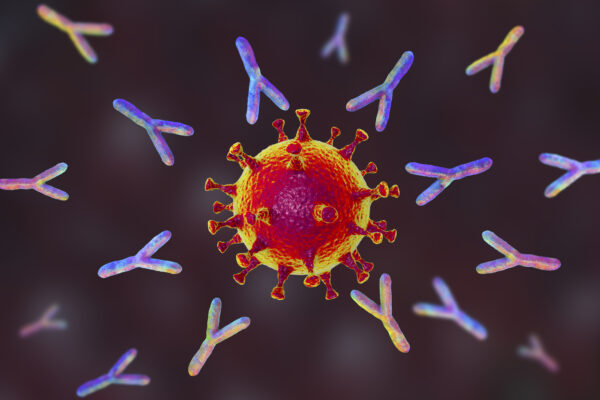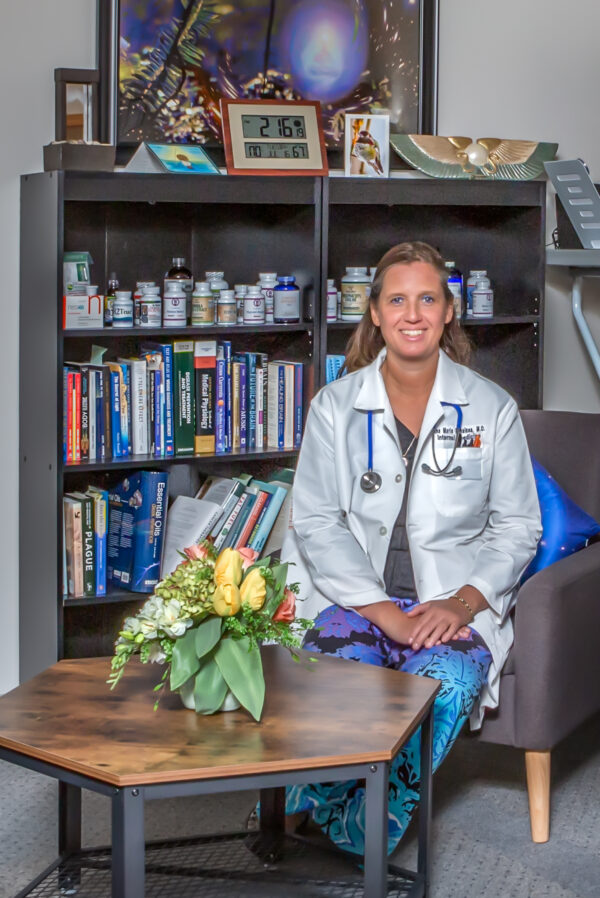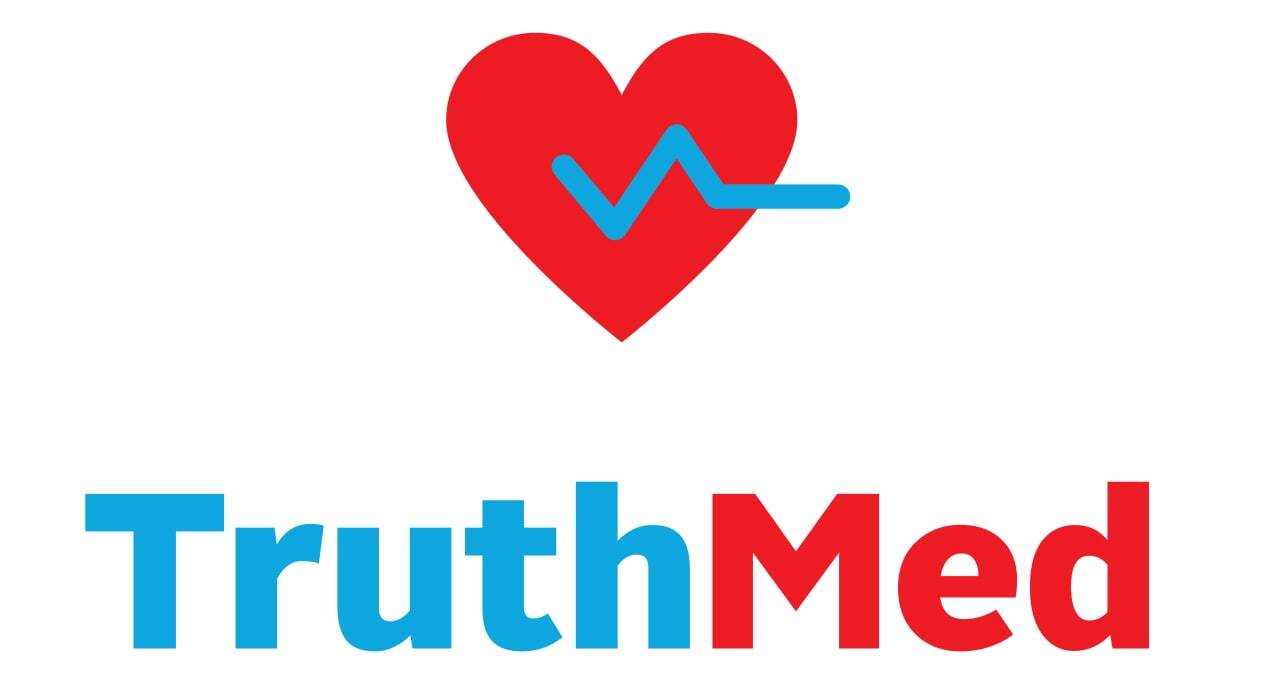New Pre-Print Study Implies Airborne COVID-19 Antibodies Post-Vaccination
By Marina Zhang
Since the rollout of mRNA COVID-19 vaccines, many researchers have speculated on the possibility of transmission of vaccine particles from the vaccinated to the unvaccinated, more commonly known as “vaccine shedding.”
Though these speculations are routinely fact-checked, anecdotal stories of unvaccinated people who become infected with COVID-19 or have experienced strange symptoms after contact with friends or family who were vaccinated have persisted.
Several doctors have also speculated about possible transmission as new findings in support of these ideas emerge.
A recent pre-print study has attracted media attention as the results of the study may be interpreted as suggestive of vaccine transmission via shedding.

Illustration of antibodies (y-shaped) responding to an infection with the new coronavirus SARS-CoV-2.
New Pre-Print Study Implies Airborne Antibodies From Vaccine
A new pre-print study published by the University of Colorado concluded that antibodies can be transmitted through aerosols.
In the study, unvaccinated children living in either vaccinated or unvaccinated households were nasal swabbed for COVID-19 antibodies.
The authors, led by Dr. Ross Kedl, found that children living with vaccinated parents have higher concentration of COVID-19 antibodies in their swabs than children living in unvaccinated households.
Antibodies are immune markers, and each person’s collection of antibodies is a reflection of immunization and infection history. The presence of each antibody indicates that the person may have been exposed to a particular infection or vaccine the antibody fights against.
Therefore, a person is only supposed to display antibodies to COVID-19 if they have been infected or vaccinated. Yet, these children have not been vaccinated against nor infected with COVID-19. Why do they have antibodies?
The authors of the study reasoned that the vaccinated parents likely passed their antibodies to the children. They produced antibodies from the vaccine, these antibodies accumulated in the nasal cavities and became airborne. Their children then breathed the antibodies in, accumulating COVID-19 antibodies in their nasal cavities.
This is a plausible speculation as it is well documented that bodily fluids including breastmilk, saliva, tears, and sweat contain antibodies. Mothers are also recommended to breastfeed their babies, as it provides their babies with antibodies, protecting them from infection.
Still, though we know that antibodies can be present in bodily fluids, we do not know if antibodies can become airborne.
To support their speculation that antibodies may be airborne, the authors tested face masks from vaccinated individuals and found COVID-19 antibodies on the masks.
The authors argued that since everyone breathes into their masks, the COVID-19 antibodies found on the masks could be evidence that antibodies can be aerosolized, and therefore transmitted to others.
Though, the authors acknowledged that antibodies could have come off from saliva and sweat.
However, internal medicine practitioner and integrative and chelating specialist Dr. Ana Maria Mihalcea questioned the conclusion.
She told The Epoch Times that the study leaves a lot open to interpretation, and the same findings can also be used to support speculations of vaccine shedding.
“[The study] says that the antibodies are being transferred,” she said. “But could it be that the spike protein has been transferred [through contact through skin] and the child has mounted its own antibody response? I don’t think that that’s really clear.”

Photograph of Dr. Ana Maria Mihalcea. (Courtesy of Dr. Mihalcea)
What Do We Know About Transmission?
Vaccine shedding, dubbed as “transmission” by Dr. Sherri Tenpenny, has remained a controversial topic in the discourse on COVID-19 vaccines as there has yet to be any study that proves or shows conclusive proof of shedding.
One topic of debate is that vaccine shedding may not be the most accurate definition for what clinicians suspect are happening.
Vaccine shedding specifically refers to the spreading of virus and viral particles after vaccination. Viral shedding has been observed with vaccines for oral forms of polio vaccines, rotaviruses, adenoviruses, influenza, and many more.
Shedding only happens for vaccines containing live and attenuated viruses.
After vaccination, viruses can be detected in fecal samples of the vaccinated, and those who come into contact with them may be infected if the shed viral particles are infectious.
However, the mRNA Pfizer and Moderna COVID-19 injections do not use live coronaviruses, rather only the spike protein mRNA is shipped into the cells inside a lipid nanoparticle.
Therefore, they cannot shed viruses, as there is no virus.
J&J and AstraZeneca both use weakened live adenoviruses (not coronavirus) to transport spike protein DNA. However, these viruses have been edited so that they cannot replicate in our cells, therefore, we also should not be able to shed COVID-19 vaccine adenoviruses either.
What about spike proteins then? As mentioned above, there are no studies that provide conclusive proof of spike protein transmission, though health experts are unwilling to rule out the possibility.
Many doctors have spoken up about the possibility of transmission of the particles contained in the COVID-19 injections from vaccinated individuals into the unvaccinated, causing possible symptoms.

File photo of human blood samples on an automated testing line.
Curious Clinical Findings
Though there has been no study that gives proof of transmission, many doctors have observed strange occurrences in unvaccinated individuals after spending time with people who are vaccinated.
“What I’ve seen with unvaccinated individuals who would come into the office with symptoms of things like headaches, feeling unwell, myalgia (meaning muscle aches), and a lot of times women who got in contact with vaccinated people develop hemorrhaging and menstrual irregularities, but very unusual in terms of large clotting and bleeding,” Dr. Mihalcea told The Epoch Times.
She shared a recent case of two unvaccinated menopausal women who started hemorrhaging after sitting together with a recently vaccinated individual for two hours in a car ride.
“The vaccinated person had just gotten their shot a week earlier, and the two unvaccinated women when they got out of the car after a two hour car ride, they both started bleeding.”
Mihalcea cited Pfizer clinical trials as another indication of possible vaccine transmission or shedding.
The Pfizer clinical trials (pdf) listed vaccine exposure during pregnancy (EDP) as an event that needed to be reported and monitored.
Though exposure could occur by participating in the study and getting vaccinated, or getting exposed through a vaccinated male partner through sexual contact, Mihalcea expressed concern at Pfizer’s listing of EDP through “environmental exposure.”
The Pfizer document said that examples of environmental exposure during pregnancy includes, “a female family member or healthcare provider reports that she is pregnant after having been exposed to the study intervention by inhalation or skin contact.”
This means that pregnant women may be exposed to the injection if breathing near or touching someone who was vaccinated.
EDP through environmental exposure would also be counted if, “a male family member or healthcare provider who has been exposed to the study intervention by inhalation or skin contact then exposes his female partner prior to or around the time of conception.”
This statement suggests that someone can be exposed to the vaccine through breathing or skin contact with someone who was vaccinated, and then pass it to someone else.
Findings from peer-reviewed research published in the Gazette of Medical Sciences also seem to be in support of vaccine transmission.
The study, which is based on a survey conducted by My Cycle Story, documented a spike in occurrences of decidual cast shedding and miscarriages in women after COVID-19 vaccines started rolling out.
One poignant testimony (pdf) in the study told of a woman of unknown vaccination status who experienced decidual cast shedding after her husband spent 20 minutes with people who were vaccinated.
Decidual cast shedding is a rare event. Around 40 cases have been documented in the medical literature, and it occurs when the thick mucus lining of the uterus sheds in nearly the exact shape of the inside of the uterus, creating a triangular cast.
This event is so rare that very few studies have been published about it, yet My Cycle Story reported 292 out of 6,092 women surveyed have experienced it following the rollout of COVID-19 vaccines. The study was also supplemented with testimonies from women who previously had successful pregnancies but began to suffer miscarriages after visiting friends and family who were vaccinated.
Though these cases may be a coincidence, Mihalcea’s own observations of unvaccinated patients developing various COVID-associated and strange conditions following contact with someone who was vaccinated made her suspicious that transmission was happening.
At the same time, other findings were also emerging that solidified Mihalcea’s suspicions.
A Canadian doctor, Dr. Charles Hoffe, announced in July 2021, that he found over 60 percent of his vaccinated patients had elevated D-dimer levels, and made his findings into a video.
D-dimer testing is often done to check for blood clots. Though elevated D-dimer levels are not conclusive of blood clots, they definitely indicate that possibility.
Mihalcea started doing her own D-dimer tests on unvaccinated patients who were concerned about vaccine transmission or showing conditions suggestive of possible transmission.
“I started seeing a huge amounts of [unvaccinated] people of all ages who had abnormal D-dimer testing, indicating the possibility for micro clotting,” Mihalcea said.
Mihalcea also published a video explaining elevated D-dimer levels in her patients, suggesting possible transmission from vaccinated to unvaccinated individuals.
She told The Epoch Times that, since the vaccine rollout, she has treated many long COVID patients and cases of suspected transmission. She said that she has treated around 90 to 100 cases of suspected transmission, and brought their levels of D-dimers back down through her treatment regimen.
She has also since bought a microscope with which to analyze her patients’ blood through a prick test, by taking a prick of their blood and examining it under the microscope.
Blood analysis is normally done by pathologists, and many primary care physicians may choose to not analyze their patients’ blood, but Mihalcea, and many other doctors, have decided to investigate themselves.
Her treatment regime involved a series of supplements and pharmaceuticals, namely, ivermectin and hydroxychloroquine, both of which are effective antivirals for the COVID-19 virus. She also prescribes quercetin which reduces inflammation, glutathione has detox effects, blood thinners such as aspirin to prevent blood clotting, and vitamins to boost the immune system including vitamins D and C.
She said she later found vitamin C infusions, and chelating therapies, which remove heavy metals, also improved her patients’ symptoms and brought their D-dimer levels back to normal.
Original source: https://www.theepochtimes.com/new-pre-print-study-implies-airborne-covid-19-antibodies-post-vaccination_4725552.html
